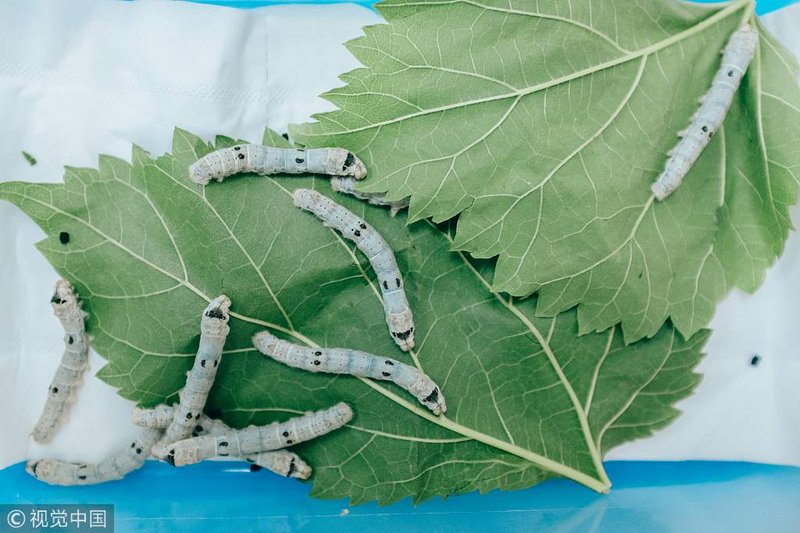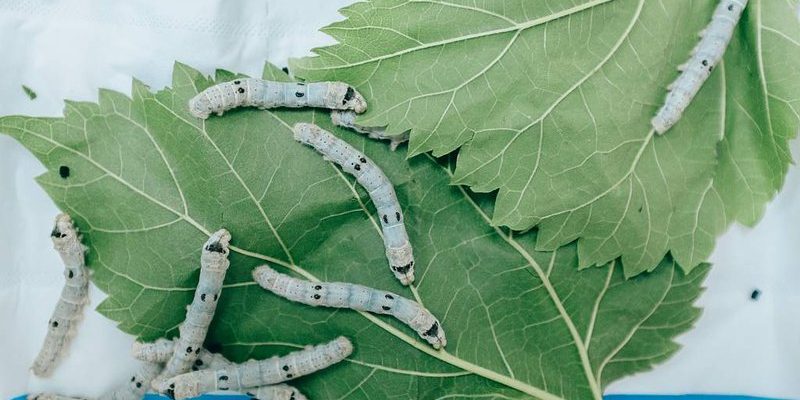
Let’s dive into this topic, exploring the silkworm’s relationship with mulberry leaves and what happens when those leaves aren’t available. Picture it like this: if you were stuck on a deserted island with only one type of food, you’d soon wonder how long you could last without it, right? That’s similar to what silkworms face when they can’t get their beloved mulberry.
Understanding Silkworms and Their Diet
Silkworms, or *Bombyx mori*, are highly specialized insects. They’ve evolved over thousands of years to thrive specifically on mulberry leaves. When you look at their life cycle, which includes the egg, larva (the silkworm stage), pupa, and adult moth, you’ll notice that each stage relies heavily on nutrition from these leaves to grow and develop properly.
In the larval stage, which is where they spend most of their life, silkworms grow incredibly fast. Imagine a teenager during a growth spurt—they’re constantly hungry! Silkworms can eat their weight in leaves daily, consuming around 40,000 times their body weight in just a few weeks. That’s a serious appetite! Without the right food, they can’t grow or eventually produce silk, making mulberry leaves crucial for their survival.
What Happens Without Mulberry Leaves?
So, let’s get to the heart of the matter. **Can silkworms survive without mulberry leaves?** The short answer is no, at least not for long. When deprived of their main food source, silkworms can face serious health issues.
Firstly, without mulberry leaves, silkworms may not grow properly. They rely on the nutrients in these leaves for their **energy** and **development**. A lack of essential nutrients can lead to stunted growth, weakened bodies, and ultimately, they may even die. It’s like trying to run a marathon on an empty stomach—eventually, you just can’t keep going.
Moreover, their silk production is directly linked to their diet. A well-fed silkworm produces beautiful, strong silk, whereas a malnourished one will not only produce less silk but also inferior quality. This is not just a problem for the worms; it’s a significant issue for farmers relying on silk production.
Possible Alternatives to Mulberry Leaves
You might be wondering if there are alternatives to mulberry leaves that could sustain silkworms in a pinch. While there are some options, they often fall short of being a true substitute.
There are various plants, like **osage orange, fig leaves,** and even **various other herbaceous plants**, which have been tried as substitutes. However, these alternatives usually lack the specific nutrients that silkworms require. Using them might keep silkworms alive for a short time, but they won’t thrive—much like trying to take a shortcut in a recipe that calls for a specific ingredient.
Additionally, feeding silkworms an incorrect diet can lead to poor health and ultimately lower silk quality. So, while it’s possible to experiment with other plants, it’s not advisable if you want your silkworms to flourish.
How Long Can Silkworms Go Without Food?
Now that we understand how essential mulberry leaves are, you might be curious about how long silkworms can actually survive without any food at all. Generally, silkworms can endure without food for about 2 to 3 days. After that, they begin to experience serious stress and health decline.
During these critical days, their bodies start consuming stored energy, which can lead to malnutrition. You know how you feel cranky when you skip a few meals? Silkworms can get cranky too, but in their case, it shows in their inability to grow and produce silk. The longer they go without food, the worse it gets, and it can become a fight for survival.
Why Mulberry Leaves Matter
In the grand scheme of things, mulberry leaves do more than just feed silkworms—they play a vital role in the entire ecosystem of silk production. Think of them as the foundation of a house; without a solid base, everything else falls apart.
Mulberry leaves are rich in nutrients, providing essential proteins and minerals that directly affect the health of silkworms. This relationship has been cultivated over centuries, with farmers selecting specific mulberry varieties to yield the best silk quality. The better the leaves, the healthier the worms, and thus, the higher the quality and quantity of silk produced.
This points to a larger environmental impact, too. Without mulberry trees, not only do silkworms suffer, but the entire silk industry could face challenges. It’s a delicate balance that emphasizes the importance of safeguarding mulberry trees and their habitat.
In essence, silkworms can’t survive without mulberry leaves. Their dependence on these leaves is a crucial part of their existence, dictating their growth, health, and silk production. While there might be some alternative foods to trial, none can replicate the nuanced benefits of mulberry leaves.
As we continue to explore the fascinating world of silkworms and silk production, it’s essential to recognize the importance of their preferred diet. Understanding their needs not only helps in nurturing these creatures better but also supports the broader environment they depend on.
So, the next time you think of silkworms munching away, remember: it’s all about those mulberry leaves, and without them, these little silk-makers are in for a tough time!

